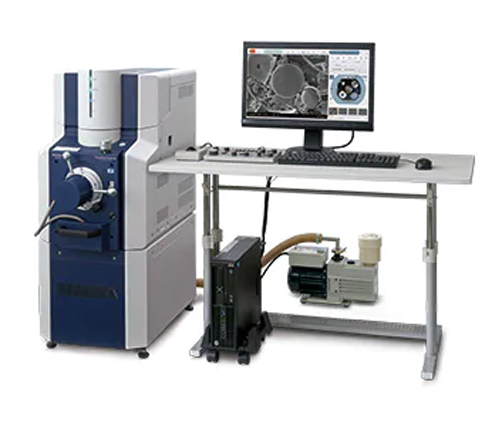Hitachi scanning electron microscope uses a finely focused electron beam to irradiate the surface of the sample. The electron beam interacts with the Hitachi scanning electron microscope sample to generate various signals, including secondary electrons, backscattered electrons, characteristic X-rays and other photons of different energies. These signals are received by the corresponding detectors and used to study the microscopic morphology of various materials; with accessories such as energy spectrometers, spectrometers, etc., the element composition of the materials can be analyzed.
The most common accessory of Hitachi scanning electron microscope is X-ray energy spectrometer, which plays an indispensable role in the analysis of various materials.
Hitachi scanning electron microscope combined with energy spectrometer can be used to analyze the type and content of elements in the material micro-area. Its working principle is: each element has its own characteristic X-ray wavelength, and the size of the characteristic wavelength depends on the characteristic energy E released during the energy level transition. The energy spectrometer uses the different characteristic energies of X-ray photons of different elements. One feature is used for component analysis.

The accuracy of energy spectrum quantitative analysis is related to the sample preparation process, the conductivity of the sample, the content of the element and the atomic number of the element. Therefore, in the process of quantitative analysis, there are some errors in Hitachi scanning electron microscope principles (databases and standards) that we cannot eliminate, and some errors (operation methods) caused by human factors, which will cause inaccurate energy spectrum quantification. .
Then, scanning electron microscopy can not only use energy spectrum analysis to determine the enrichment degree of elements at different positions based on changes in contrast, but also determine the distribution of trace elements. Here I want to give you a little trick: calibrate the energy spectrum before using it, make the sample flat, make the analysis area homogeneous and pollution-free, and make the sample conductive and thermally conductive.